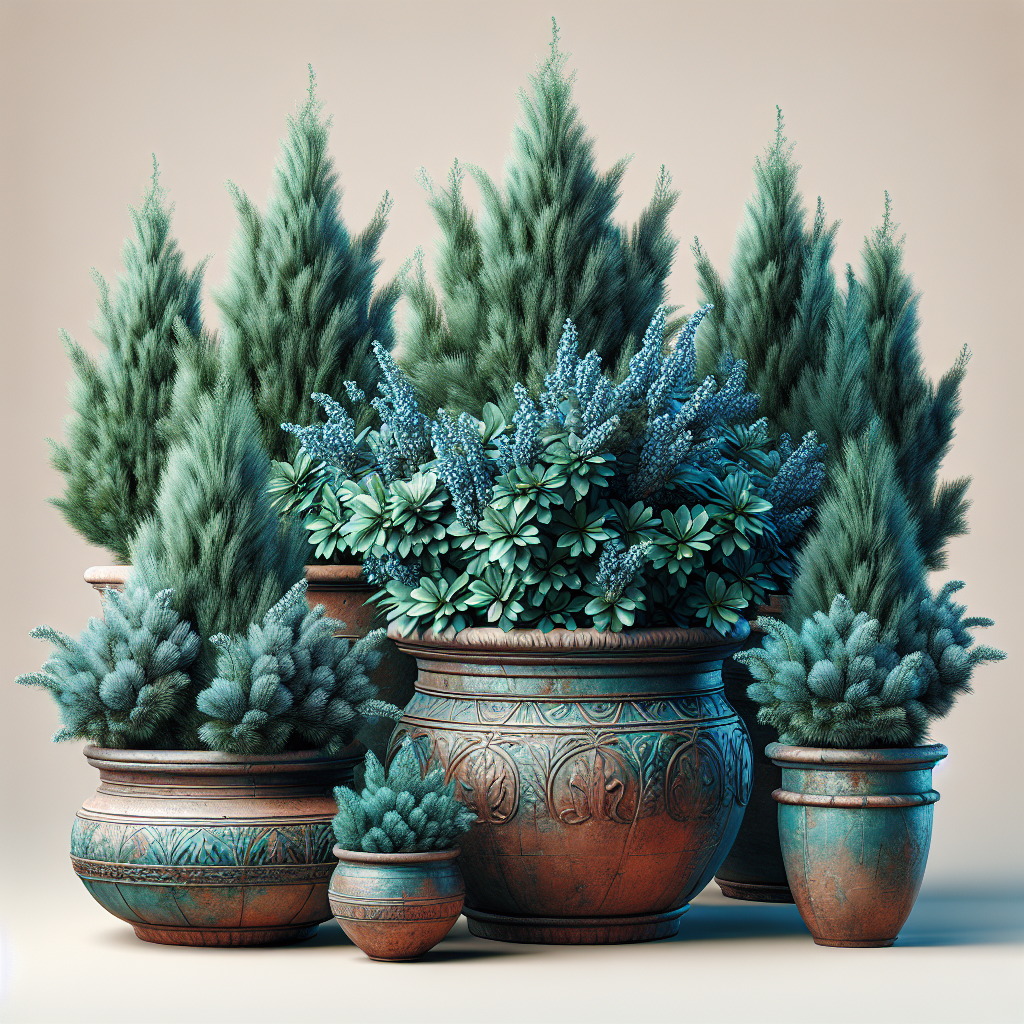Blue Point Juniper is a popular ornamental tree that can be grown in pots to bring beauty and interest to any outdoor space. With its striking blue-green foliage and graceful shape, this versatile plant is a fantastic addition to patios, balconies, or any other area where space is limited. In this article, we will explore the unique characteristics of the Blue Point Juniper and discuss how to care for it when grown in pots.
The Blue Point Juniper, also known as Juniperus chinensis ‘Blue Point’, is a variety of Chinese juniper that has been specially cultivated for its stunning blue-colored foliage. This evergreen tree features dense, needle-like leaves that are a vibrant blue-green color, creating a striking contrast against its reddish-brown bark. The Blue Point Juniper grows in a conical shape with a symmetrical form, making it an excellent choice for adding structure and visual interest to any garden or outdoor space.
One of the main advantages of growing Blue Point Juniper in pots is its versatility. This compact tree can thrive in containers of various sizes and shapes, making it easy to incorporate into any design scheme. Whether you have a small balcony or patio, or simply want to add a touch of greenery to your outdoor living area, the Blue Point Juniper is an ideal choice. Its compact size also makes it easy to move around, allowing you to change up your outdoor decor whenever you like.
When choosing a pot for your Blue Point Juniper, make sure it has good drainage holes to prevent waterlogging and root rot. Terra cotta or ceramic pots are excellent choices as they allow air circulation around the roots and help regulate moisture levels. Fill the pot with well-draining soil mix designed for container plants and place the tree in a sunny location where it will receive at least six hours of sunlight per day.
Watering is crucial when growing Blue Point Juniper in pots. These trees prefer slightly moist soil but do not tolerate waterlogged conditions. Water your tree regularly during the growing season, allowing the top inch of soil to dry out between waterings. In hot weather or dry climates, you may need to water more frequently to keep the soil consistently moist. However, be careful not to overwater as this can lead to root rot.
Fertilizing your Blue Point Juniper in pots is also important for promoting healthy growth and vibrant foliage. Use a balanced fertilizer formulated for evergreen trees and feed your plant once every two months during the growing season (spring through fall). Be sure not to over-fertilize as this can cause nutrient burn and damage the roots. Follow the manufacturer’s instructions on how much fertilizer to use based on the size of your container.
Pruning is another essential aspect of caring for Blue Point Juniper in pots. Regular pruning helps maintain its shape and encourage new growth while preventing overcrowding and disease. Use sharp shears to trim back any dead or damaged branches as well as shaping the overall silhouette of the tree. Prune lightly throughout the year but avoid excessive pruning during periods of active growth.
Pests and diseases can sometimes be an issue when growing Blue Point Juniper in pots. Common pests include spider mites, scale insects, and aphids which can be treated with insecticidal soap or neem oil spray. Keep an eye out for signs of infestation such as yellowing leaves or sticky residue on the foliage, and take prompt action to prevent further damage.
Overall, Blue Point Juniper is an excellent choice for adding beauty and interest to any outdoor space when grown in pots. Its striking blue-green foliage, graceful form, and compact size make it an ideal ornamental tree that can thrive in containers with proper care and maintenance. With regular watering, fertilizing pruning ,and protection against pests and diseases ,your Blue Paint junipers will provide years of enjoyment ,adding color texture,and structure to potted plant arrangements .













